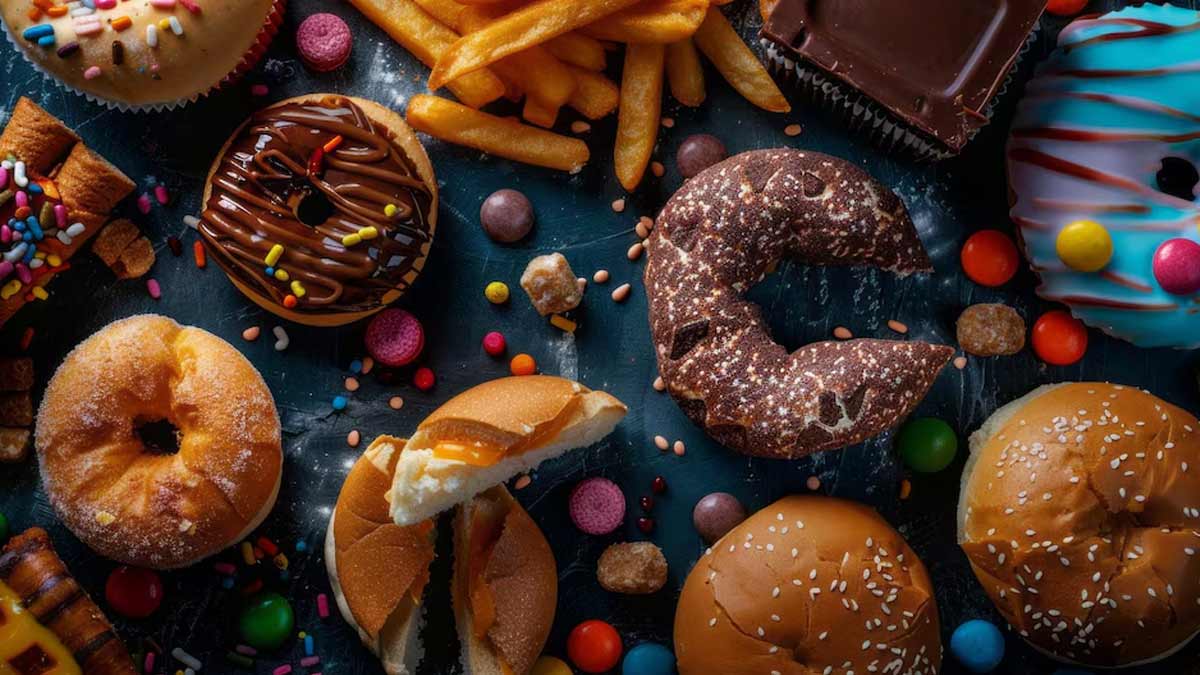
Sugar cravings are an almost universal experience, and they can be surprisingly hard to resist. Whether you're reaching for a piece of chocolate after a meal or fighting off the urge for a sugary snack mid-afternoon, it feels like the pull towards sweet treats is constant. But why do we crave sugar, and more importantly, how can we control these cravings?
Table of Content:-
To understand the science behind sugar cravings and how to control them, OnlyMyHealth interacted with Reshma Nakte, Clinical Nutritionist and Weight Loss Expert, Mumbai.
The Science Behind Sugar Cravings
Several factors contribute to sugar cravings, ranging from biological to emotional influences. According to Reshma Nakte, “The brain plays a critical role in regulating energy balance. Some human studies have demonstrated increased preference for high-fat and high-sugar foods in people reporting greater stress exposure.” This connection between stress and sugar cravings often leads people to reach for sugary foods in challenging moments.
The brain's reward system is a key player in sugar cravings. Sugar activates the release of dopamine, the "feel-good" neurotransmitter, providing a rush of pleasure that reinforces the behavior of eating sweet foods. Over time, the brain begins to associate sugar with this pleasure, leading to cravings, especially when we're feeling low or stressed.
Also read: How Eating Too Much Sugar Speeds Up Ageing

A 2015 study explored neurochemical changes in rodents during obesity development, highlighting the impact of high-fat, high-sugar diets on reward circuits and stress response. Nakte explains, "The study showed that such a diet leads to changes in neurotransmitters involved in the hedonic appraisal of foods, indicative of an addiction-like capacity of foods high in fat and/or sugar."
Hormones such as insulin and ghrelin also play significant roles. After consuming sugar, insulin is released to help absorb glucose. However, high sugar intake causes insulin spikes, followed by rapid blood sugar drops, triggering more sugar cravings. Ghrelin, the "hunger hormone," can increase before meals, especially after frequent sugar consumption, training the body to expect more sugar when hungry.
Psychological factors, like emotional eating, also fuel cravings. Sugar can act as a temporary mood booster by increasing serotonin, another feel-good neurotransmitter, which explains why many people turn to sweets during periods of stress or boredom. This creates a cycle of emotional reliance on sugary foods, further reinforcing cravings.
Also read: What Is The Best Time To Eat Sugary Foods? Expert Answers
Controlling Sugar Cravings

Understanding the mechanisms behind sugar cravings is crucial, but how do we manage them effectively? Nakte offers several practical strategies:
Eat Balanced Meals: Consuming meals that include complex carbohydrates, protein, and fiber helps regulate blood sugar levels, reducing the likelihood of sugar cravings. "Consume balanced meals with complex carbohydrates from whole foods, fruits, and vegetables, and high-fiber and protein-rich foods such as lentils, pulses, eggs, and meat," advises Nakte.
Stay Hydrated: Often, dehydration is mistaken for hunger or sugar cravings. Drink plenty of fluids, and include hydrating foods like coconut water, soups, and fruits such as watermelon and cucumber.
Make Mindful Choices: Recognising your triggers is key to managing cravings. When the urge for sugar strikes, opt for healthier alternatives like dates, dark chocolate (70% or more), raisins, figs, or fresh fruit instead of highly processed, sugary foods.

Minimise Processed Foods: Processed snacks and sugary treats often perpetuate cravings. Nakte recommends minimizing ultra-processed foods like ready-to-eat meals, fried snacks, bakery products, and sugary foods.
Choose Whole Foods: Whole grains, nuts, seeds, and protein-rich foods increase satiety, helping you feel fuller for longer and reducing cravings. Incorporating foods like whole wheat, millet, nuts, seeds, and minimally processed protein sources will help curb your sweet tooth.
Include Healthy Fats: Healthy fats, such as those found in nuts and seeds like pumpkin seeds, walnuts, and chia seeds, contribute to satiety and help reduce cravings.
By understanding the science behind sugar cravings and implementing these strategies, you can take control of your cravings, improve your diet, and maintain a healthier relationship with food. As Nakte emphasizes, "Changes in food composition and availability have contributed to the dramatic increase in obesity, but with mindful choices, we can minimize the harm caused by unhealthy eating."
Also watch this video
How we keep this article up to date:
We work with experts and keep a close eye on the latest in health and wellness. Whenever there is a new research or helpful information, we update our articles with accurate and useful advice.
Current Version